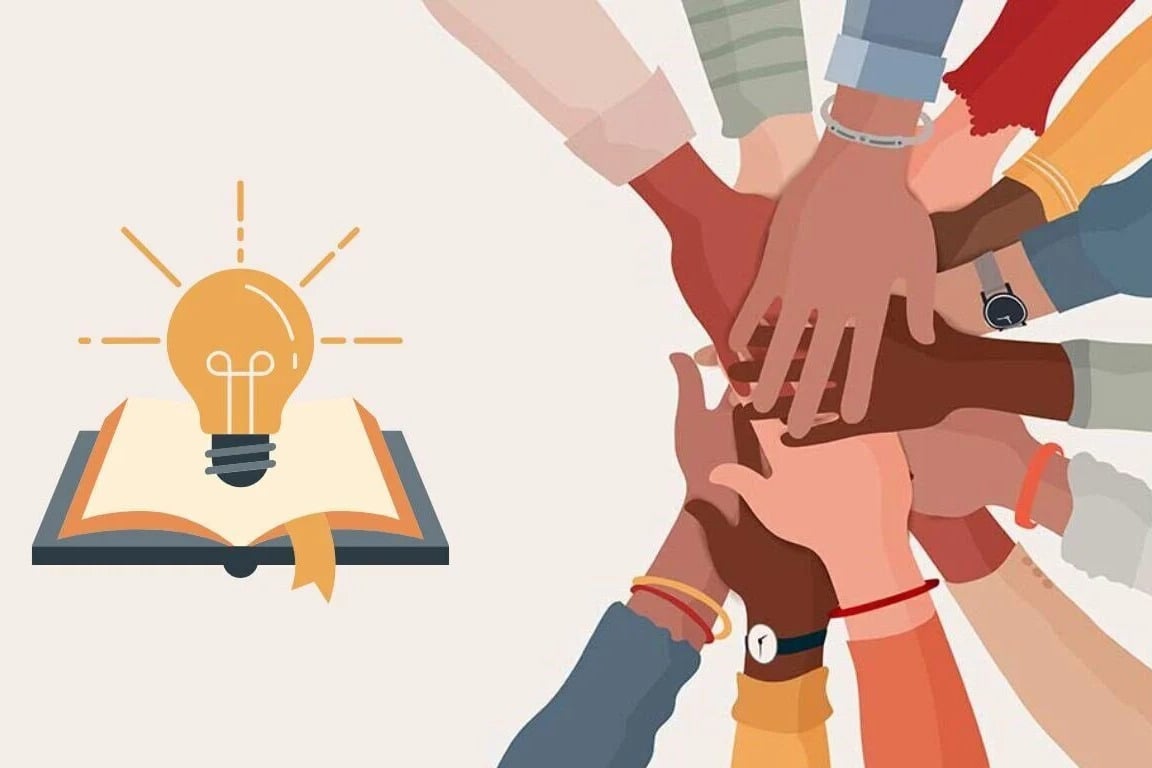The digital revolution has touched nearly every aspect of our lives. More than 3.5 billion people have access to the internet and more than 5 billion are estimated to have some sort of mobile device, with half of them being smartphones. This level of connectivity has influenced how people engage with others, get their news and see the world around them.
It is no wonder, therefore, that these digital transformation trends have also heavily impacted the education industry. From primary school educators through those in higher education, the digital transformation has affected classrooms and how these teachers reach their students. These changes have been accelerated by the COVID-19 pandemic, which closed schools in countless countries around the world. In an effort to help students keep learning, many schools and teachers turned to technology to help them bridge the gap.
The use of online learning, however, has been only one way that digital technology and advancements have impacted students and trends in the classroom. Those interested in learning more about how technology has changed learning, and the benefits that some of these changes can offer teachers and students alike, should read on. We will cover the top 8 digital trends that we have seen emerging as schools begin to embrace the power of the internet in the school environment.
INVEST IN EDUCATION TOOLKIT
With this 10-step process, you will have all the tools you need
to master the critical areas of a successful school.
1. Improved accessibility and access
One of the most inspiring digital transformation trends visible in education is the improved accessibility to school, lessons and even degree programs for students of all ages. Students who may have impairments that hinder their ability to access certain types of information will find that technology can go a long way in removing these barriers. For example, text-to-speech programs and programs that transcribe dictated content can help to improve the ability of all students to access the information presented through schools. Those with visual or audio challenges, as well as reading disabilities, can all benefit from these different types of technology that allow them to learn and earn degrees.
Accessibility and access also continue to improve from a geographic perspective thanks to technology. Online learning opportunities, which allow students to access schools and degree programs that might not be local to them, help students secure the best possible education for their given situation. Students no longer have to be limited by their immediate geographical area. Even before the pandemic hit, more than a third of students reported taking at least one class online. This trend will continue to grow as people see the value of improving flexibility for some courses, or even programs, in higher education.
2. Personalized learning approaches
Personalized learning approaches have also been an important component of the digital education revolution. Rather than trying to fit everyone into the same metaphorical box, many schools and programs have begun to realize the value of offering adaptable solutions for students based on their own strengths and weaknesses.
Personalized learning approaches provide a number of benefits for students and learning institutions. When students are allowed to learn in a way that fits their own learning approaches best, it helps them absorb and retain critical information; personalization empowers them to move forward in their education. Learners become encouraged to earn the degrees and qualify for the educational and job opportunities that suit them well, but might have felt out of reach before.
When students feel this engaged with the material at hand, it also helps to keep them on track with their program. Schools that can genuinely meet the needs of their students and keep them moving forward with the coursework will also improve their retention rates. This, in turn, will give schools’ reputations a boost and enhance their ability to prepare their learners for the next step in their education or job training.
3. Virtual reality
Virtual reality has become an increasingly important component of technology across all sectors. Although it was initially used as a form of entertainment, it has also attracted attention for its potential in training sequences or even shopping.
In the world of education, virtual reality can provide students with the chance to ‘experience’ the material they learn before they actually move into real-world applications. For example, in the hospitality industry, students can see firsthand the different potential work environments, feel as though they are in a situation where they need to serve customers, and receive training that gives them hands-on experience without even leaving their classroom.
This can help students feel more comfortable and better prepared for their future careers and the completion of their education. Students who feel more qualified and comfortable will find it easier to transition into their roles and perform.
4. Cloud-based learning opportunities
The cloud offers students and teachers the chance to connect from virtually anywhere. They can use these types of applications while sitting in a lecture hall in person, from home, or even half-way around the world. When the pandemic hit, it only accelerated the potential for these types of applications. Teachers began using a variety of different platforms to host lectures and post videos for students to help them keep up with their education despite not being able to meet in person.
These platforms offer a host of opportunities. They enable the streaming of lectures, thus making online classes possible and interactive. Students can also use many applications to submit their assignments, track their syllabi, and even connect and engage with others in their class. The platforms can be used to break out into smaller groups so that students can collaborate together on projects and assignments.
Cloud-based applications that have been designed specifically for students can even allow students to take exams.
Thanks to these types of programs, students from a wide range of backgrounds have more access to classes and educational opportunities. Learners who require degree programs that offer improved flexibility, students who do not live near a college or university that offers their desired program, or those who cannot attend class in person for any number of reasons will all experience benefits from the growth of cloud-based learning.
5. Incorporating the Internet of Things into the school environment
In the age of ‘smart’ devices, the Internet of Things, or IoT, can be found with increasing prevalence throughout people’s lives. No longer are simply phones considered ‘smart', but people can take advantage of technological improvements that make everything from their plugs and outlets to their thermostats ‘smart’. In education, this trend has begun to help connect learning institutions and students in an entirely new way.
On one level, IoT can benefit education campuses by helping schools improve security and comfort features while controlling costs. Smart devices that allow school officials to understand traffic patterns will inform them where lights and security features will have the most value. Smart devices can also gauge when temperature control systems should be switched on and take other steps to provide the students with a comfortable learning experience.
IoT can also help schools remain connected with students. Time-stamps help track assignments so that students can better monitor their degree progress and verify their work has been received. Student tracking also helps teachers and professors take attendance and know when someone is missing. In the case of young children who still live at home, this information can then be used to let parents know if their child is unexpectedly absent and provide better communication and safety in that regard.
6. Security across digital devices
With technology quickly becoming such a critical feature in the daily lives of students and teachers, security has become another necessary trend in the digital education revolution. Schools collecting a wealth of information on students, from their personal data to grades, want to know that this information is protected and secured.
Security protocols that allow schools to record, store and transmit sensitive student data will be critical throughout the digital transformation. Schools will also want to make sure that they have a means of securely allowing students to digitally submit assignments and verify user authenticity. This becomes even more critical in instances when students may take exams or other assessments digitally. Security breaches can be devastating for individuals and institutions as a whole, making them an important priority and trend throughout the adoption of education technology.
7. Teaching digital citizenship
As these digital transformation trends have impacted students in a variety of ways throughout their lives, students need to know how to interact politely and civilly online. This is similar to students learning how to be professional in an office or hospital setting. Schools have begun to recognize this importance, and teaching students in the principles of good digital citizenship has become an increasingly important trend throughout education.
When educating students on being a good digital citizen, schools empower students to embrace the full capacity of technology. To see the best results from digital citizenship instruction, institutions should aim to make it part of the culture for the students and teachers alike. These principles guide people to behave more collaboratively online, which can help students succeed in their classes and in a professional environment.
Students with this type of training are more prepared to enter the digitally-connected professional world. Their internet usage skills and ability to engage others through digital channels will help them perform in their chosen field, which means that educating students on digital citizenship is one of the most important emerging education trends.
8. Big data
Schools have long collected a wealth of information about their students, including their demographics, grades and classes. Big data provides them with the opportunity to take this information much further and use it to better understand student trends and successes. Big data refers to the growing technological capabilities to track large amounts of data and interpret it with the assistance of algorithms to find patterns and helpful information.
This includes the convergence of a variety of different sources of data. Schools may have previously gathered a wide range of useful information about students, but it was siloed and only really accessible to the particular person or department who collected the data. This made it harder to put the information in context and understand everything it could tell the school about the educational experiences they provide. Schools that learn how to break down these silos will find that they have a better chance of building a thorough understanding of their students and degree programs.
Using the data compiled and analyzed through big data capabilities can tell schools helpful information such as:
- Where students struggle and thrive in their programs. They can then uncover any particular patterns about the students that excel in particular areas and use this to help them improve the learning experience.
- They can track greater trends in student populations, including student performance and professional outcomes. The better they understand how their degrees impact their students, the easier it will be for them to improve the education and resources they offer.
- How well students respond to different types of information delivery and class styles. If they uncover trends about online classes, seminar classes and lectures for particular topics, they will understand how to shape their degree program to help students thrive after graduation.
The information collected will empower schools to better serve their students. It can impact the types of personalized learning opportunities offered, as well as the structure of classes and the resources and support offered to students.
The shift towards a digital, modern world has had a measurable impact on the inner workings of education. Schools of all levels have begun to realize that this technology can offer them a number of benefits and new strategies for educating their students. Professionals interested in tracking the latest trends and shifts in the digital education revolution should consider the 8 ideas above. Finding ways to incorporate these into an educational plan can attract students and schools alike for the potential they offer.





